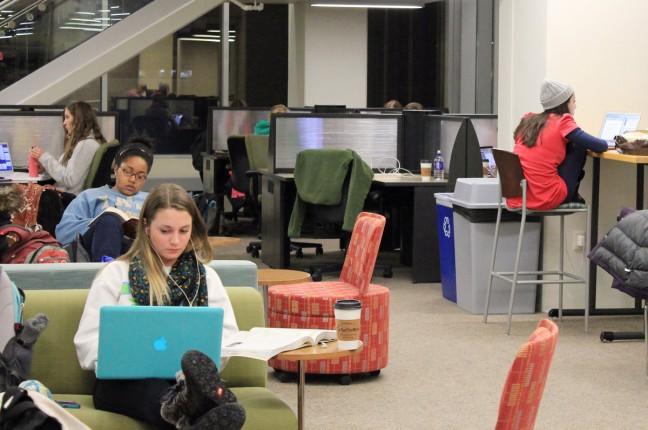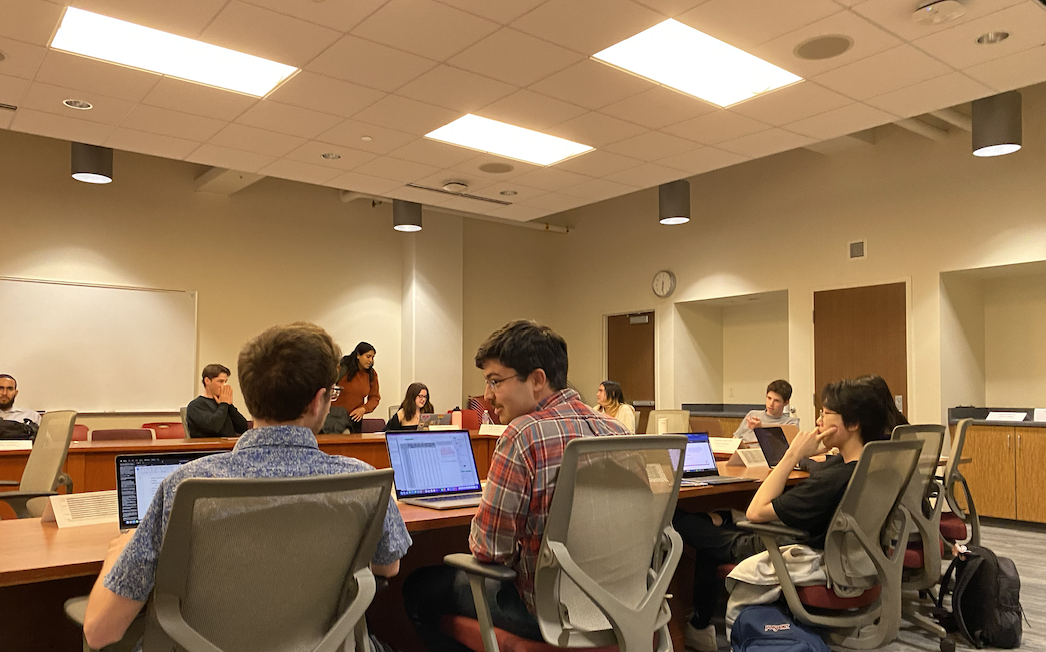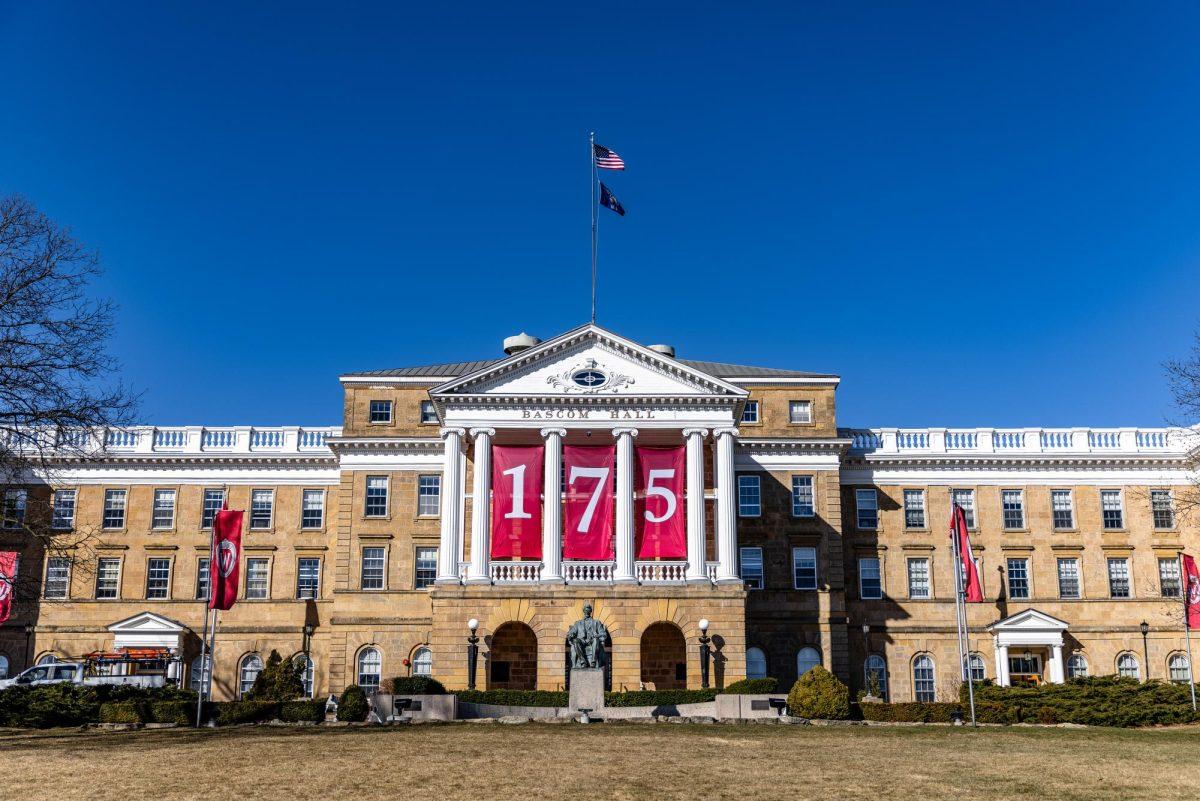After India Archer failed the required math classes at her Indiana high school, keeping her from earning a standard graduation diploma, she worked her way up to calculus at Madison College, where she excelled in her math courses.
But when Archer transferred to University of Wisconsin last year, the size of her first university math course was a game-changer. Instead of around 20 classmates, she now had hundreds. And, at a university full of high-achievers, Archer, now a junior at UW majoring in computer science, figured her instructors would teach on a level designed to challenge them.
Most of all, she knew that she would now be responsible for her learning in a new way.
“In community college, they hold your hand a little bit more,” Archer said.
In a large university lecture, her teachers wouldn’t approach her if she got a low grade. She’d have to monitor her progress on her own.
Children of diverse backgrounds to gain education, experience in STEM fields through UW program
Sophomore Paola Santiago came to the same realization.
She had always enjoyed math as a student at Middleton High School, in part because she could get extra help when she needed it. In a class of about 25 students, she could ask questions get one-on-one help during All-School Resources periods every other day. But college was different.
“If you understand it in lecture, great,” Santiago said. “If you don’t, you have to go find your own help. I was very lost, so I definitely hated it.”
Despite struggling through Calculus 1, both Archer and Santiago enrolled in Math 222, the second course in the calculus series. They also enrolled in a mandatory discussion section but found they needed more. At discussion, teaching assistants would answer questions, Archer said, but they’d go so in depth that they’d usually only get to a few questions each week.
“If that wasn’t your question then discussion didn’t really pertain to you,” Archer said.
In Santiago’s case, the teaching assistant would instruct students to work through a set of practice problems in teams. But the other students didn’t always want to work together, she said, and if she asked for help the teaching assistant would usually tell her to ask her team. Even if her team worked together, sometimes her teammates didn’t know or couldn’t explain the answer.
“It was just a longer process, and I never felt like I left the room understanding super well,” Santiago said.
UW announces Michigan State professor as new School of Business dean
This nervousness is common, and it can have a major impact on students’ attitude toward math.
In a 2018 nationwide survey by the Society for Industrial and Applied Mathematics, more than two-thirds of math teachers said a lack of confidence was to blame for students’ math struggles.
If those teachers are right, students throughout the U.S. could use a hearty dose of math confidence. According to the most recent Program for International Student Assessment, which compared the reading ability and math and science literacy of 15-year olds in 72 countries, American students’ math abilities continue to lag behind those of their international peers.
In the 2015 study, American students scored on average 23 points lower in math than the average of all of the nations surveyed. And the U.S. is losing ground: The average U.S. math score has fallen in each of the last two assessments.
But at UW, a few math instructors have dedicated themselves to bridging the confidence gap. For more than forty years, the voluntary Math Tutorial program has sought to help nervous math students develop the confidence they need to survive challenging math courses. Participants credit these tutorials with shifting their attitudes — and, in turn, their grades.
UW’s math tutorials are 50-minute, twice-weekly supplemental sessions designed to help struggling students master their class material. Students say the tutorials offer a different kind of help than the required discussions do.
“Tutorial was almost like a class again, but sort of not so fast, and you could stop it and ask questions,” Archer said.
Santiago agreed. She started participating in the tutorials in the same semester as Archer, who discovered the tutorials during her second calculus course, and said the tutors would begin by asking students what they’d done in their last lecture and what they wanted help with. They would even preview what the professors would cover in the next lecture.
Though a few of the instructors are specialized faculty, the tutorials are often taught by graduate assistants — some from the math department but others from various computer science or engineering departments. But the tutorial instructors have an advantage over the graduate assistants that lead the mandatory discussion sections: They typically teach no more than ten students at a time, allowing them to personalize their teaching to fit the students’ individual needs.
Survey ranks UW sixth in research expenditures, retains 2016 rank
Tutor Yuting Wu, a third year PhD student in electrical & computer engineering, knows firsthand what it’s like to struggle through calculus. Going into her third year as a tutorials tutor, she still remembers finding Calculus 2 daunting when she took it as a UW freshman in 2012.
As a tutor, she watches the students’ facial expressions as she’s teaching. When she sees “overwhelming eyes,” she slows down, asks what they are confused about and goes over the material again.
When it clicks, she can tell.
“You can see the expressions on their face: ‘Oh, I’ve got this!’” she said.
The small class size also allows for more interaction, a defining feature of the tutorials.
When Santiago showed up at the classroom in the basement of Van Vleck Hall, she quickly learned that she wouldn’t be allowed to just sit quietly and listen.
“Right away I could tell that the tutor wasn’t playing games, and he didn’t care if you would be embarrassed if he called you out,” Santiago said. “He would look at you and you knew he was waiting for the answer.”
Over time, however, that built her confidence, she said. It forced her to not be scared to speak up and not be embarrassed if she was wrong.
But, most importantly, tutorials give students an opportunity to stick with a problem until they finally understand it, even if that takes a long time.
Senior Karishma Bhawnani, who joined the tutorials in her first semester at UW, recalls her tutor’s patience.
“He would explain the same question again and again, even if you didn’t understand it the first, third or even the fourth time,” Bhawnani said.
Though she spoke well of her professors, she said that most of them don’t have the patience — or the time — to do that.
Instructors and teaching assistants typically tell their classes about the tutorials but not everyone gets the message. Students also get emails about various tutoring opportunities, but Archer worries they can get lost in the flood of campus emails about apartment rentals, discounts and events.
And hearing about the tutorials doesn’t guarantee a student the chance to participate.
Due in part to the small class size, the program does not currently have space for all who apply. In the spring of 2018, 158 students applied, but only 110 were invited to participate, according to data provided by Frank Rooney, the program’s director.
Each time he wants to create an additional tutorial group, he must find both a tutor and a group of students who are taking the same math class and are available at the same time.
Bucky’s Tuition Promise program fills monetary gap for low-income students in first year
Committing to spend an extra 50 minutes twice a week in class might seem daunting to busy college students, many of whom balance jobs or family responsibilities with their school work, but some tutorials students find creative ways to make it work. Archer wasn’t able to find a tutorial section that fit her schedule, so she often attended Rooney’s office hours instead.
Archer hopes that one day the program might offer night or summer tutorials so that students are never on their own — like she was this past summer when she took linear algebra.
Some students credit the tutorials with helping them survive their courses.
“If I had not had the help I had obtained from Dr. Rooney, I likely would have failed [Calculus 2],” Isabelle Tigges-Green, a senior majoring in chemistry and Spanish, said.
She estimated that without that help, she wouldn’t have been able to complete 80 percent of the homework.
Archer agreed.
“[Calculus 2] was a very sink or swim class,” Archer said. “And Frank was my way of swimming.”
Both Santiago and Archer said the tutorials benefits go beyond just better grades.
When Archer first transferred to the university, she was sure she would be behind the other students. She even started attending therapy sessions at University Health Services to deal with what she calls “imposter syndrome” — the fear that she didn’t belong in this place.
But, with time and help, her confidence and self-esteem grew and she came to understand that she was probably in the majority.
“Unless you’re just crazy good at math, I think most people had to get extra help for [Calculus 2],” Archer said.
For some students, just the opportunity to have conversations about math can help them develop an entirely new relationship with the subject.
Nickolas Comeau, a senior majoring in neurobiology, said when he came to college, he thought of himself as “pretty bad at math” and signed up for the tutorials to be sure he’d get a decent grade in Calculus 1.
Today, he’s taking advanced math classes by choice, and he looks forward to his 8:50 a.m. Calculus 3 tutorial.
In fact, as Comeau continued his studies, he discovered that he wanted to focus on the mathematical side of neurobiology. He credits the tutorial program with giving him time to develop a love for math. High school doesn’t allow students the time they need to figure out how they really feel about math, he said, but the math tutorials at UW do.
To those who think of themselves as not “a math person,” Comeau said the choice is theirs.
“You totally could be,” Comeau said. “There are resources here to become that kind of person.”

















